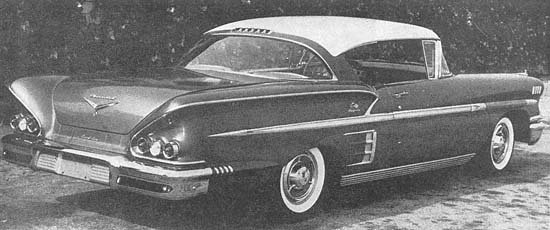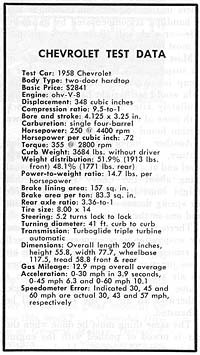 |  |
NEWEST ANGLE of Chevrolet styling for
1958 is seen from the rear. Basic shape of
body is much like design that preceded it.
LAVISH USE OF CHROME on front end is characteristic of all GM styling for '58. Dual headlamps are standard on all series. |
| REMEMBER when Chevrolet was
strictly a "transportation" car, offering little in the way of performance, styling or engineering to, capture the imagination of automobile fanciers? It was dependable, economical, but definitely not exciting. Just how much this situation has changed was demonstrated vividly by the 1958 Bel Air Impala tested for this report! This model was selected for testing because it is a brand-new one in theChevy lineup and was equipped with the new 348-Cubic-inch V-8 and air suspension. Like all 1958 models it had an X-shaped frame completely different from past Chevrolets. As the foundation for the entire car, this frame design is one of the more important engineering features of the new Chevy. As the name implies, the new frame is shaped like a big X. It does not have parallel side rails joined ladder-fashion by cross members as in conventional designs. From a reinforced box girder center beam box girder side rails splay out to the front and rear corners of the car. |  |